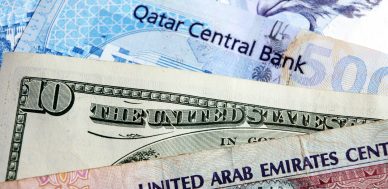Will the Petrodollar Collapse in 2018?
The oil industry and geopolitical risks have gone hand in hand. Oil represents energy, and without it, modern economies cannot run. Salt, sugar, and spices were also strategic resources once. But even at the peak of their appeal and value, they are mere shadows of oil’s importance to the modern world. Yet changes in the oil industry and the erosion of America’s dominance over geopolitics have also hurt the U.S. dollar, which has long served as the one currency that all countries must have to buy oil. The concept has become known as the “petrodollar,” and a petrodollar collapse in 2018 is possible, if not likely.
Oil demand has been increasing slowly since the 2008 financial crisis. However, the United States, once the principal driver of the oil industry, will no longer be the primary source of demand. The new emerging economic powers like China and India will soon be dictating the terms of the price of oil. The pairing between the size of the American economy and its world-leading oil appetite is what allowed the petrodollar system to emerge. Thus, any change to one or both variables could spell the collapse of the petrodollar system.
Why Should You or Anyone Else Care About the Petrodollar?
The petrodollar is one of the main reasons why America itself can survive on debt. It’s the main reason why—unlike many countries in the European Union, for example—in times of turmoil, the Federal Reserve can apply monetary policies to help prevent or mask economic or financial collapse.
In the 1970s, when oil prices reached their longest peaks (inflation adjusted), the producing countries (which organized themselves around OPEC) reinvested the billions of dollars they received as payment into the global economy. This drove the demand for dollars, sustaining their value. In other words, global oil demand turned the dollar into the world’s de facto reserve currency.
The U.S. economy could collapse trying to cope with the effects of a petrodollar collapse.
Oil exporters agreed with the U.S. that the returns on their U.S would be held in dollars. Indeed, the creation of the petrodollar in 1973 coincided with the U.S. de-pegging the value of the dollar from gold prices to allow for fiat money. The oil producers were told they would earn returns on their dollars equivalent to those they would have earned investing in gold. (Source: “Non-Dollar Trading Is Killing the Petrodollar — And the Foundation of U.S.-Saudi Policy in the Middle East,” HuffPost, last accessed January 22, 2018.)
The End of the Petrodollar Is Bad News for U.S. Military
Surely, countries are free to accumulate reserves of other stable currencies from the British pound or the euro. But why would they? They need dollars to buy the most critical resource: oil. It’s the oil-plus-dollar system that enables the United States to invest in terribly expensive weapon systems, fund the world’s biggest and most spread-out military, and conduct military operations whose costs alone would cripple anyone else. Demand for oil equals demand for dollars. Thus, if some countries suddenly demand to pay for the oil they need in another reserve currency, it poses a major risk to the United States. China might be one of the primary culprits in facilitating the petrodollar breakdown; it could replace the petrodollar with the petro-yuan.
This is hardly far-fetched. The United States doesn’t need Middle Eastern oil as much as it did 30-40 years ago. Still, many countries still do; China, for example, imports a significant percentage of its oil from Iran. As a result, there’s a natural shift in demand for a currency that best suits those countries. China has proposed the yuan could replace the dollar in oil transactions. It would find string agreement in Iran, Russia, and Venezuela, which account for a large share of the oil market.
The crunch is that the Chinese have also asked the Saudis to consider accepting yuan for oil. That move could even spell the end of the special military supply relationship between Washington and Riyadh. Even if the Saudis may not feel that now is the right time to switch horses in the oil/currency wars, they might consider diversifying the way they sell their debt. It’s a given that when Saudi Arabia or other Gulf States issue all their bonds in dollars, they could move to yuan.
